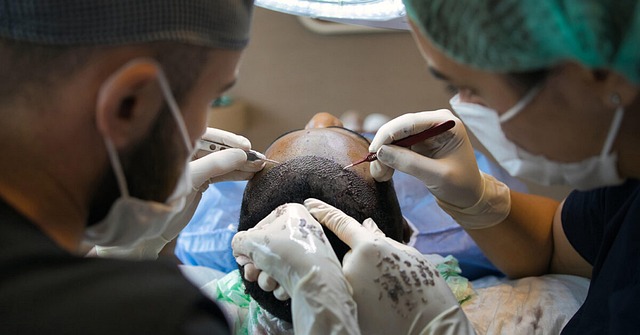A practical guide to hair transplantation for seniors
Hair loss is common as we age, but the desire for confidence doesn’t fade with time. For many older adults, hair transplants are the answer to hair loss, restoring the volume and confidence of their hair. However, high costs can be a barrier. Fortunately, proper planning can help people find quality treatment options without breaking the bank. Researching clinics, understanding treatment processes, and exploring financing options can make hair transplants more accessible while maintaining a high standard of care.

What is hair transplant surgery and how does it work?
Hair transplant surgery is a procedure that involves moving hair follicles from areas of the scalp with thick growth (donor sites) to areas with thinning hair or baldness (recipient sites). The two main techniques used are Follicular Unit Transplantation (FUT) and Follicular Unit Extraction (FUE).
In FUT, a strip of scalp is removed from the donor area, and individual hair follicles are extracted from this strip. FUE, on the other hand, involves directly extracting individual follicles from the donor area. Both methods result in natural-looking hair growth in the transplanted areas, with FUE generally leaving less visible scarring.
How can I research reputable clinics and surgeons?
Finding a reputable clinic and experienced surgeon is crucial for a successful hair transplant. Start by researching online and reading patient reviews. Look for before-and-after photos of previous patients to assess the quality of work.
Check if the surgeon is board-certified and a member of professional organizations such as the International Society of Hair Restoration Surgery (ISHRS). Don’t hesitate to schedule consultations with multiple clinics to compare their approaches and feel comfortable with your choice.
What are the average costs of hair transplants in the United States?
The cost of hair transplants can vary significantly based on factors such as the extent of hair loss, the technique used, and the surgeon’s expertise. On average, hair transplant procedures in the United States can range from $4,000 to $15,000 or more.
Keep in mind that most insurance plans consider hair transplants cosmetic and don’t cover the costs. However, some clinics offer financing options to make the procedure more accessible.
| Procedure Type | Average Cost Range | Factors Affecting Cost |
|---|---|---|
| FUT (Strip Method) | $4,000 - $10,000 | Amount of hair grafts, surgeon’s experience |
| FUE | $6,000 - $15,000+ | Number of grafts, advanced techniques used |
Prices, rates, or cost estimates mentioned in this article are based on the latest available information but may change over time. Independent research is advised before making financial decisions.
What promotions and discounts are available for hair transplants?
Many clinics offer promotions and discounts to make hair transplants more affordable for seniors. These can include:
- Seasonal promotions during slower months
- Package deals for multiple sessions
- Discounts for paying in full upfront
- Referral bonuses for recommending new patients
It’s important to research and compare offers from different clinics. However, be cautious of deals that seem too good to be true, as quality should never be compromised for cost.
Are there subsidy programs for seniors seeking hair transplants?
While there are no widespread subsidy programs specifically for hair transplants, some options may help reduce costs for seniors:
- Medical tourism: Some seniors choose to have the procedure done in countries with lower healthcare costs.
- Clinical trials: Participating in hair restoration research studies may provide access to treatments at reduced costs.
- Non-profit organizations: Some organizations offer financial assistance for medical procedures, including cosmetic ones, based on financial need.
Always thoroughly research any alternative options and consult with your primary care physician before making a decision.
How can seniors prepare financially for a hair transplant?
Planning ahead can make hair transplantation more financially feasible for seniors. Consider these strategies:
- Start a dedicated savings account for the procedure.
- Explore medical credit cards or healthcare-specific financing options.
- Ask about payment plans offered directly by the clinic.
- Consider using funds from a flexible spending account (FSA) or health savings account (HSA), if applicable.
- Discuss the possibility of a combined treatment plan that may offer better value over individual sessions.
Remember that while cost is an important factor, the quality and safety of the procedure should be the primary concern. Choosing an experienced, reputable surgeon can help ensure the best possible outcome and potentially save money in the long run by avoiding complications or the need for corrective procedures.
Hair transplantation can be a life-changing procedure for seniors experiencing hair loss. By understanding the process, researching options, and planning financially, it’s possible to find a solution that fits both your aesthetic goals and budget. Always consult with medical professionals and take the time to make an informed decision that’s right for you.
The shared information of this article is up-to-date as of the publishing date. For more up-to-date information, please conduct your own research.




